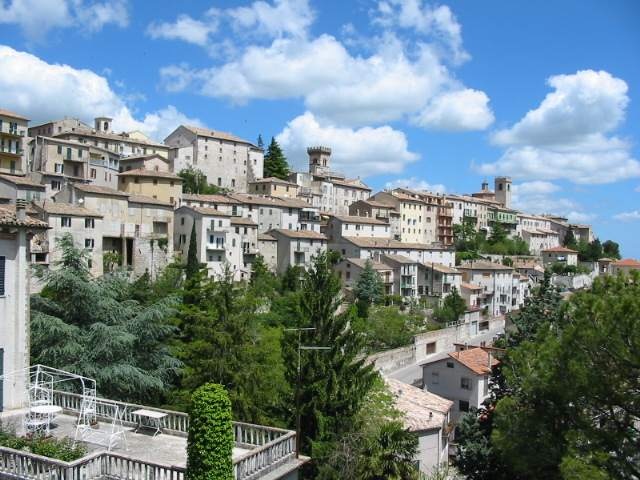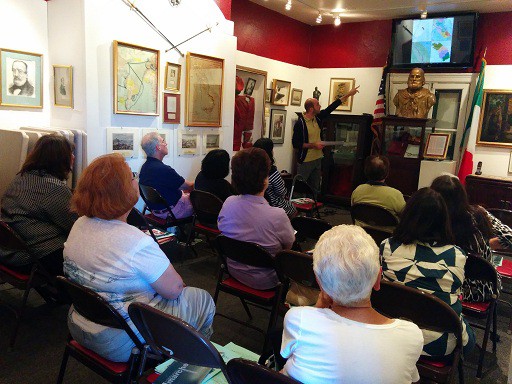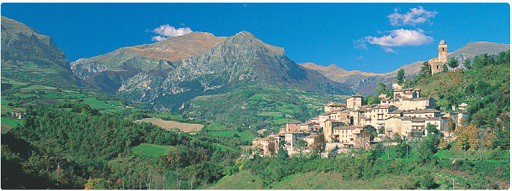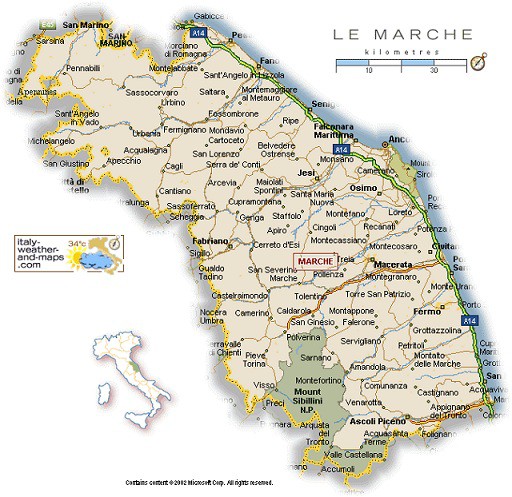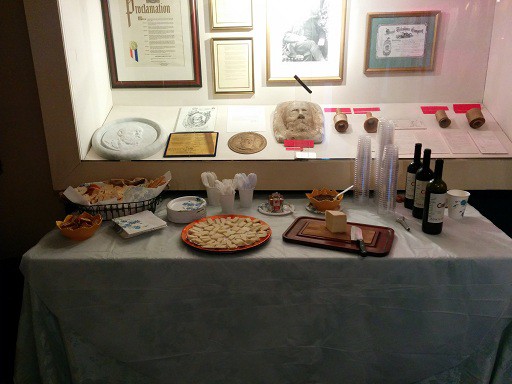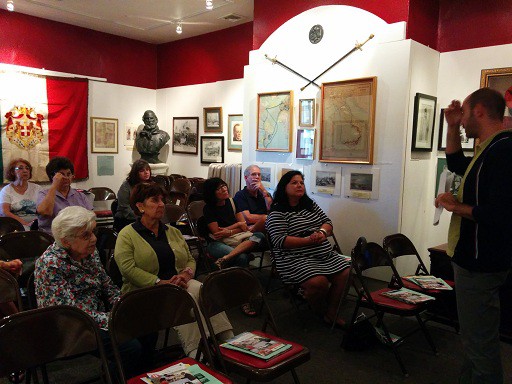Mauro Peroni, PhD, a native Italian from the region of Le Marche, gave a presentation about his region at the Garibaldi-Meucci Museum on Sunday, September 20, 2015
The presentation of this Italian region was sponsored by the tourism office of Le Marche, to promote American tourism in this north-Italian region. According to Mauro Peroni, the region has been recently valued for its beautiful beaches and landscapes, for its culture and architecture and for its fashion design.
Mauro Peroni introduced the region starting from the origins of its name, peculiar because this is the only Italian region with a plural name. Indeed, it derives from the plural name of the word marca (march), which was a border between realms, and/or a neutral/buffer zone under joint control of two states. In this region the word was originally used to refer to the medieval March of Ancona (the region capital) and nearby marches of Camerino and Fermo (two other towns).
The region is located in the Central area of the country and borders to the north on Emilia-Romagna and the republic of San Marino, to the west on Tuscany, to the southwest on Umbria, to the south on Abruzzo and Lazio and to the east on the Adriatic Sea. It extends over an area of 3,743 square miles, for two-thirds it is covered by hills, and the coastal area is 107 miles long and relatively flat and straight. Le Marche is characterized by 5 provinces: Ancona, Ascoli Piceno, Fermo, Macerata and Pesaro- Urbino.
Then he continued with a general overlook to the history, geographical position, culture and art. Among the most well-known figure born in this Italian region there is Giacomo Leopardi, the writer of many beautiful poems also considered the most radical and challenging thinkers of the 19th century. Even Maria Montessori, the teacher who revolutionized the school system, comes from this region.
Urbino is considered one of the most beautiful towns for its grandiose architecture by Federico da Montefeltro dated to the late 1400s and related to the golden age, when it was the capital of a powerful dukedom. Urbino is also the birthplace of Raphael, one of the greatest Italian painters, whose first home still stands in via Raffaello. Inside the Palazzo Ducale, you could find one of the best Italian galleries, which includes Piero della Francesca, Titian, Raphael, Botticelli, Gentileschi, and many others.
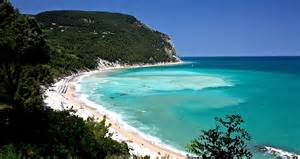 In Ascoli Piceno, also known as “city of travertine”, most of the buildings are built from a honey-colored limestone, a trademark of the southern part of Le Marche. Among the sites to absolutely visit there is the Museo Archeologico Statale on Piazza Arringo, where you can see a colorful Roman mosaic.
In Ascoli Piceno, also known as “city of travertine”, most of the buildings are built from a honey-colored limestone, a trademark of the southern part of Le Marche. Among the sites to absolutely visit there is the Museo Archeologico Statale on Piazza Arringo, where you can see a colorful Roman mosaic.
In Ancona, you can visit the Museo della Città on Piazza del Plebiscito, which shows the city’s history from Roman times to the 1960s. If you want to have a full and better view of Ancona’s real highlight, you’ll need to head uphill. A steep climb from the old town ends at the cathedral of San Ciriaco, where two marble lions support a Gothic porch.
In Pesaro you can experience the best combination between beach life and culture, since it was the birthplace of composer Gioachino Rossini in 1792. Each August the city hosts a Rossini Opera Festival.
In the cathedral of San Terenzio you can admire the glass panels in the floor for viewing Roman and Byzantine mosaics, and in the Musei Civici on Piazza Toschi Mosca a high-quality art collection which includes a Bellini altarpiece.
Macerata, instead, is a university center.
It is also a nice region with its traditional cuisine; very popular are the olive Ascolane (Ascolane olives), tartufo bianco (white tartufo mushroom) and the brodetto di pesce (fish soup). Dr. Peroni explained that each area has a typical brodetto di pesce recipe, and each one claims to be the original of the region. It offers a variety of red wines such as Rosso Piceno (red wine), and tasty desserts made by vincotto (cooked wine).
The “virtual trip” to this region was enhanced by the vision of a short documentary film, which showed some of the most important spots and people, that make and made this region so unique.
At the end, the audience enjoyed some typical food and wine of Le Marche region, with an educational explanation of their names and preparations. Mauro Peroni also gave some indications were to buy those products on Staten Island and in Manhattan.
Thanks to the tourism office of Le Marche every guest went home with some brochures to plan his/her next trip to Italy!


